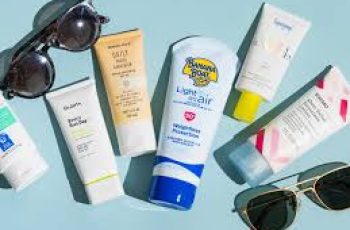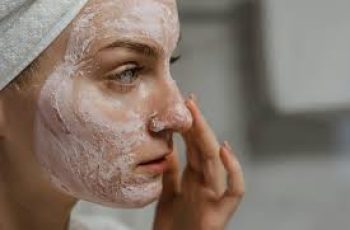
The Science of Sebum and Sebaceous Glands
Sebum is a natural oil that everyone produces in different amounts, depending on their skin type.
If you look in the mirror and notice an oily sheen on your face, then you know your skin is producing sebum.
While oily skin can be annoying and clog your pores, the oil on your skin – sebum – is beneficial in many ways.
Read on to learn the science behind oily skin and how sebum can affect your skin health.
Be sure to take the Baumann Skin Type Test, as most people misjudge their skin type! Find out if you have oily or dry skin for free today!
What is sebum?
Sebum is an oily substance produced by small glands in your skin called sebaceous glands. Sebum covers the surface of your skin and forms a protective barrier against environmental influences.
Its main job is to keep your skin soft and supple and prevent moisture loss.
Sebum also carries antioxidants like vitamin E to the surface of your skin. The average adult produces about 1 mg of sebum per 10 square centimeters of skin every three hours.
This naturally produced oil is essential for healthy skin hydration and barrier function.
What are sebaceous glands?
Sebaceous glands are tiny glands within hair follicles that produce and secrete sebum. Sebaceous glands are found throughout the skin, except on the palms, soles of feet, and lips.
The highest concentrations are on the scalp and face. Sebaceous glands are made up of specialized sebum-producing cells called sebocytes.
As sebaceous cells mature, they accumulate lipids, greatly increase in size, and eventually release sebum onto the surface of the skin.
What is sebum made of?
Sebum contains a mixture of lipids, including triglycerides, wax esters, squalene, free fatty acids, and small amounts of cholesterol.
The two main components are triglycerides and squalene. Triglycerides make up the largest proportion of sebum, about 57.5%.
They are broken down by skin bacteria into free fatty acids, some of which have antibacterial properties. Squalene, which makes up about 12% of sebum, is a powerful antioxidant.
Unfortunately, it oxidizes easily in air to form comedogenic squalene peroxides. Other antioxidants in sebum include coenzyme Q10 and vitamin E.
Other components, such as wax esters and fatty acids, help form the skin barrier.
Does sebum clog your pores?
While sebum is important for skin health, excessive oil production can lead to clogged pores and acne. An important component of sebum is squalene, which oxidizes in the air.
The product of this oxidation is called squalene peroxide, which causes comedone and clogs pores. Clogged pores combined with acne-causing bacteria trigger the inflammation associated with acne. People with excessive sebum production or “very oily skin” are most at risk for clogged pores and acne.
Does your diet affect your sebum?
Studies have shown that diet can affect sebum production. For example, diets high in sugar have been linked to increased sebum production.
One study found that men who consumed a low-glycemic diet had changes in the fatty acid composition of their sebum.
Other studies have shown that components of the Western diet, such as palmitic acid in dairy and meat, may activate the inflammatory process associated with acne.
Although further research is needed, a diet low in sugar, dairy, and meat appears to help reduce excess sebum production. Sebum and the Microbiome
The mixture of microorganisms that live on the skin is called the skin microbiome. The composition of sebum directly affects bacterial growth.
Sebum is a food source for some microbes, such as P. acnes, which digests various fats. P. acnes releases pro-inflammatory free fatty acids, which can cause acne.
On the other hand, the fatty acids in sebum have antimicrobial effects on P. acnes and other microbes.
The effect of sebum on the facial microbiome depends on factors such as your skin type, diet, and lifestyle.
Stress and Sebum Production
It is well known that stress hormones stimulate sebum production. For example, corticotropin-releasing hormone (CRH) binds to receptors in the sebaceous glands and increases sebum production.
CRH also promotes the conversion of precursor molecules into testosterone, which further increases oil production. Other stress-related molecules can also directly increase sebum production.
This explains why stress often triggers oily skin and acne. Stress management techniques can help control stress-related sebum production.
Antioxidants in Sebum
In addition to its protective and moisturizing effects, sebum contains antioxidants that prevent oxidative damage caused by free radicals.
The most important antioxidant is vitamin E. Since vitamin E is fat-soluble, sebum provides an ideal transportation system to the skin surface.
Sebum also contains other antioxidants, such as Coenzyme Q10. These antioxidants can protect the skin from oxidative stress and UV radiation.
Sebum and Skin Cancer
While sebum is primarily used to prevent dry skin, it can also protect against skin cancer in some cases.
Areas of the skin with fewer sebaceous glands, such as the lips, tend to be drier and have a higher risk of developing certain types of skin cancer.
On the other hand, when sebum oxidizes on the skin, it itself forms free radicals. This is why it is important to wash your face regularly if your face is chronically oily.
Why should you wash sebum off your face?
During the day, a thin layer of sebum can provide protection, but too much oil can lead to blemishes and a greasy appearance.
Sebum, sweat, dead skin cells, and environmental pollutants can clog pores and provide a breeding ground for acne bacteria.
Therefore, it is recommended to wash your face twice a day – this removes excess sebum, dirt, and bacteria from the surface of the skin.
The ideal cleanser is one that matches the natural pH of the skin. Here are some great antibacterial and salicylic acid cleansers:
[[C01, C08]]
Sebum clog?
Sebum prevents evaporation of water from the skin’s surface, but it is not as occlusive as mineral oil-based ingredients. However, it has occlusive properties that reduce water loss.
Although not completely occlusive, the sebum film on the skin’s surface slows evaporation and provides moisture.
People with very oily skin rarely suffer from dry skin because their sebum production creates an occlusive layer that locks in moisture.
If you have combination skin, your skin may only be oily occasionally.
Non-comedogenic Skincare for Oily Skin
If you have oily skin and don’t want to include comedogenic ingredients in your skincare routine, I have some advice for you!
This range of non-comedogenic skincare products has been developed specifically for acne-prone and oily skin types who need optimal regulation of sebum production.
Be sure to take the Baumann Skin Type Test to find the best products for your skin!


